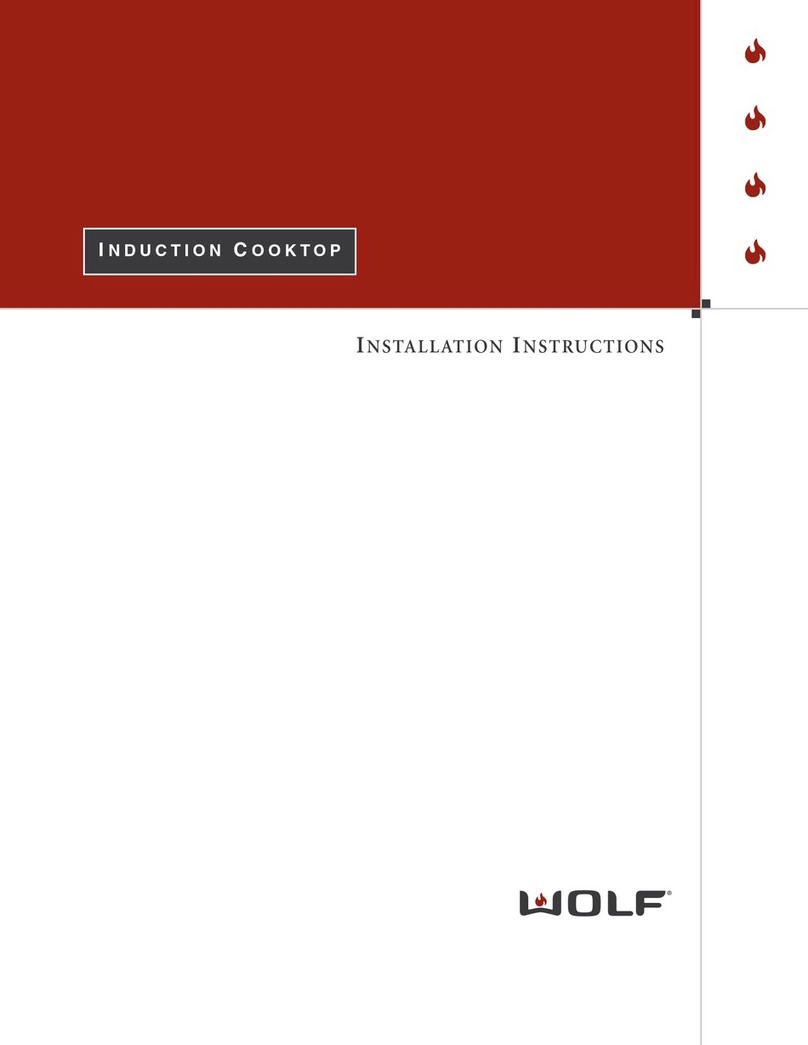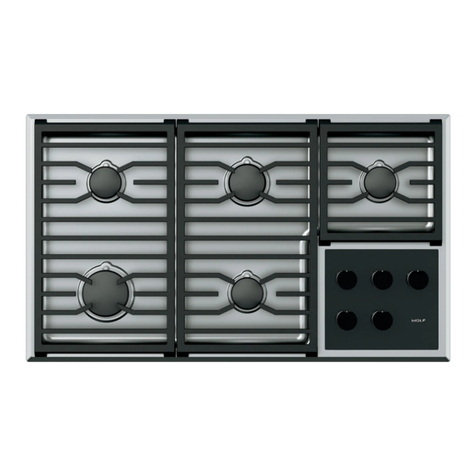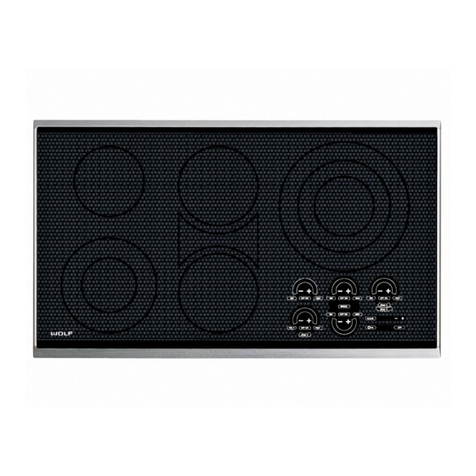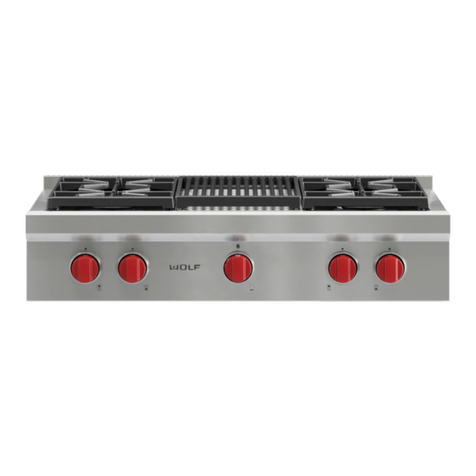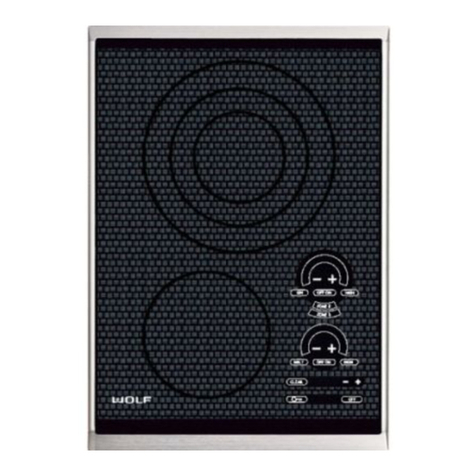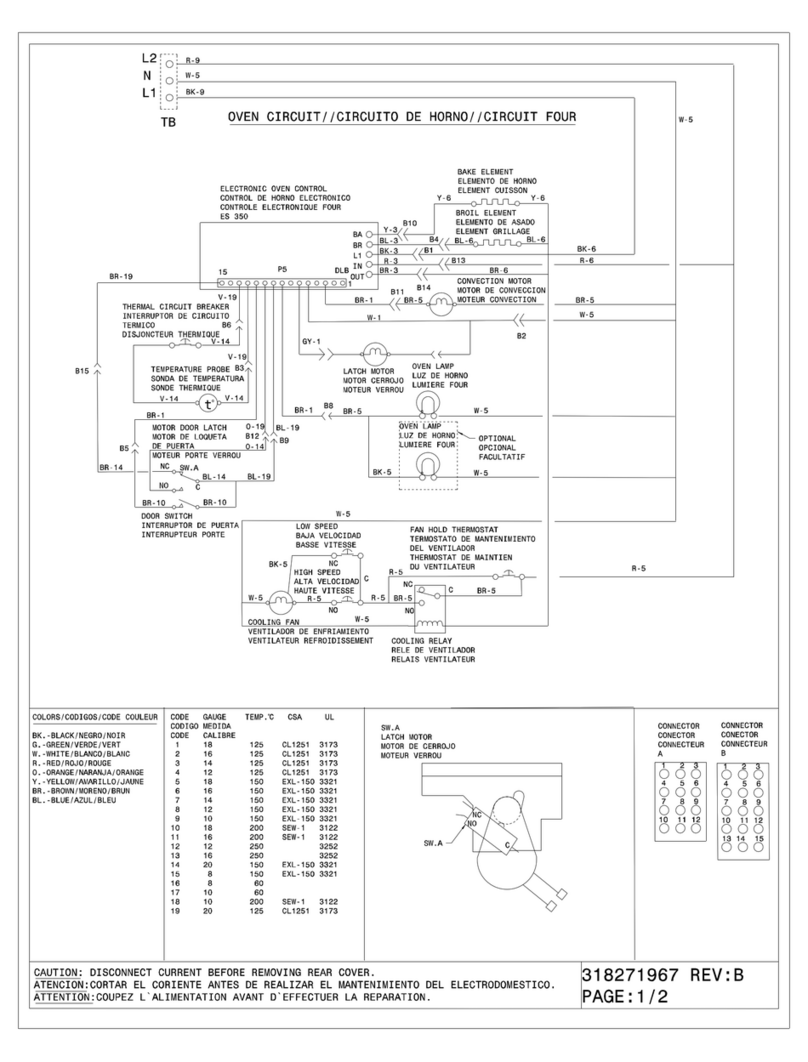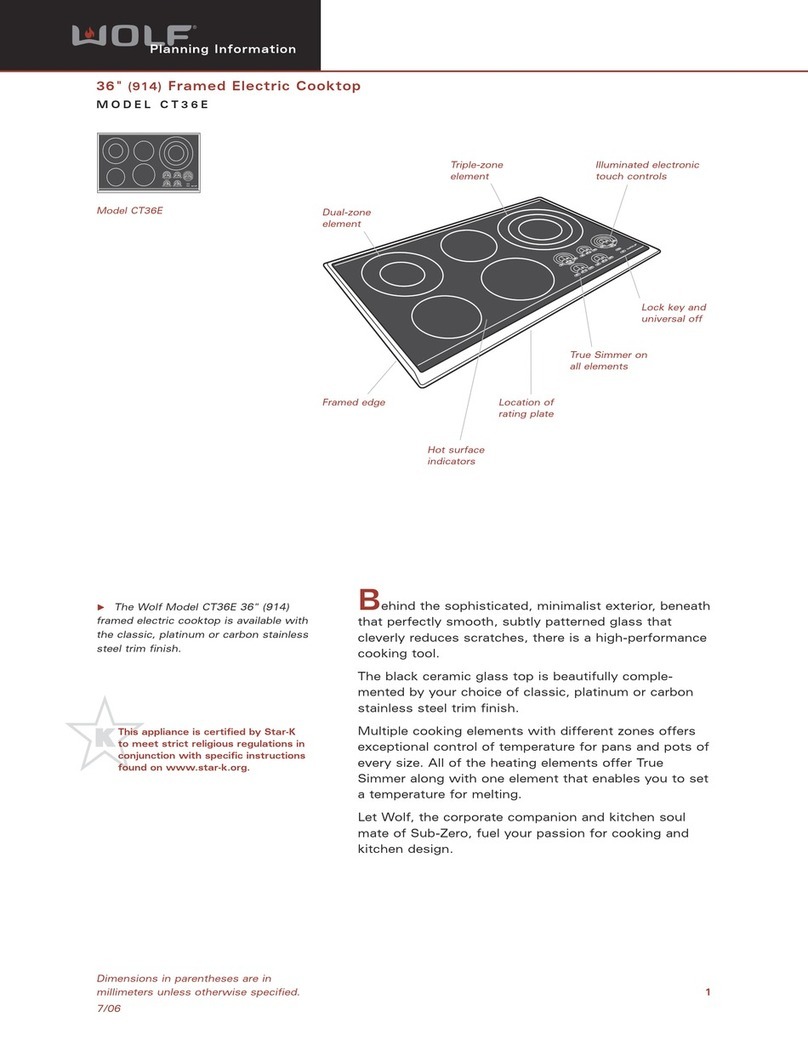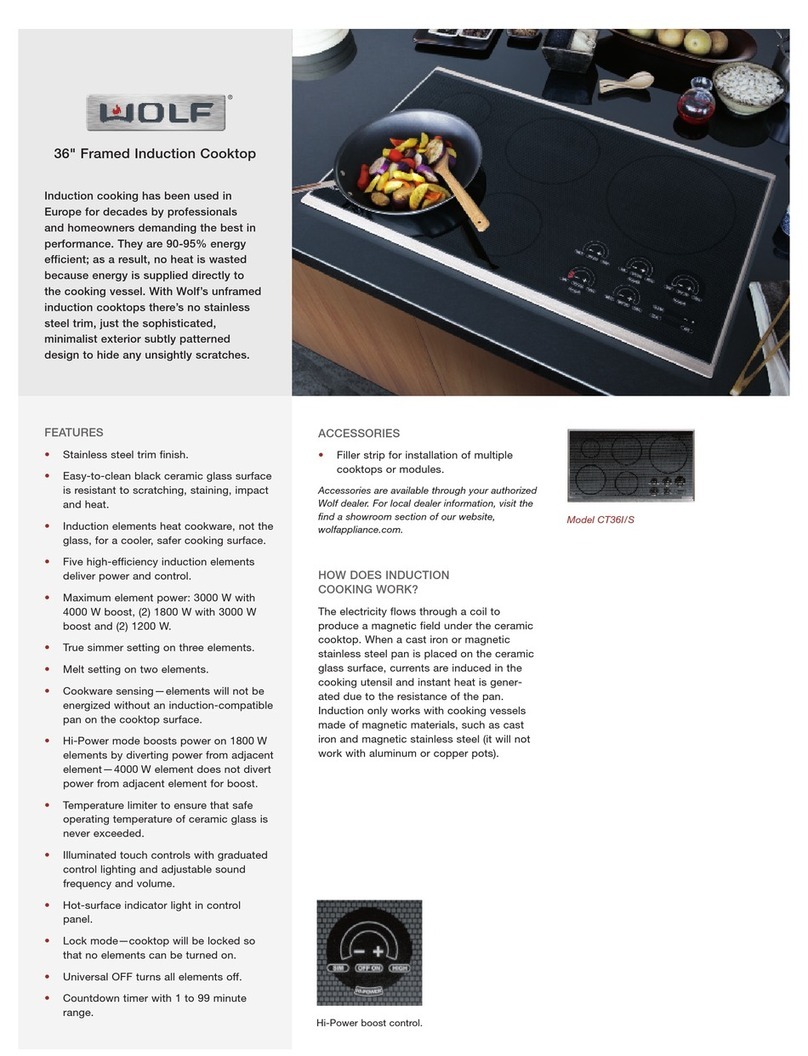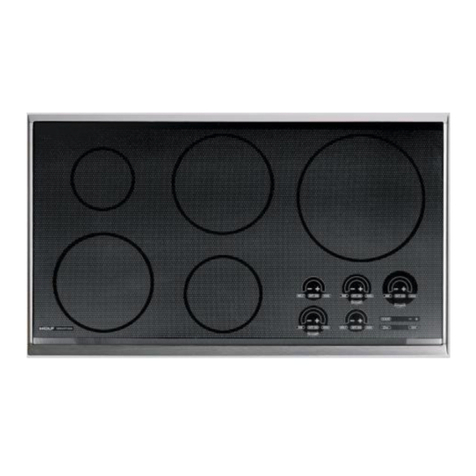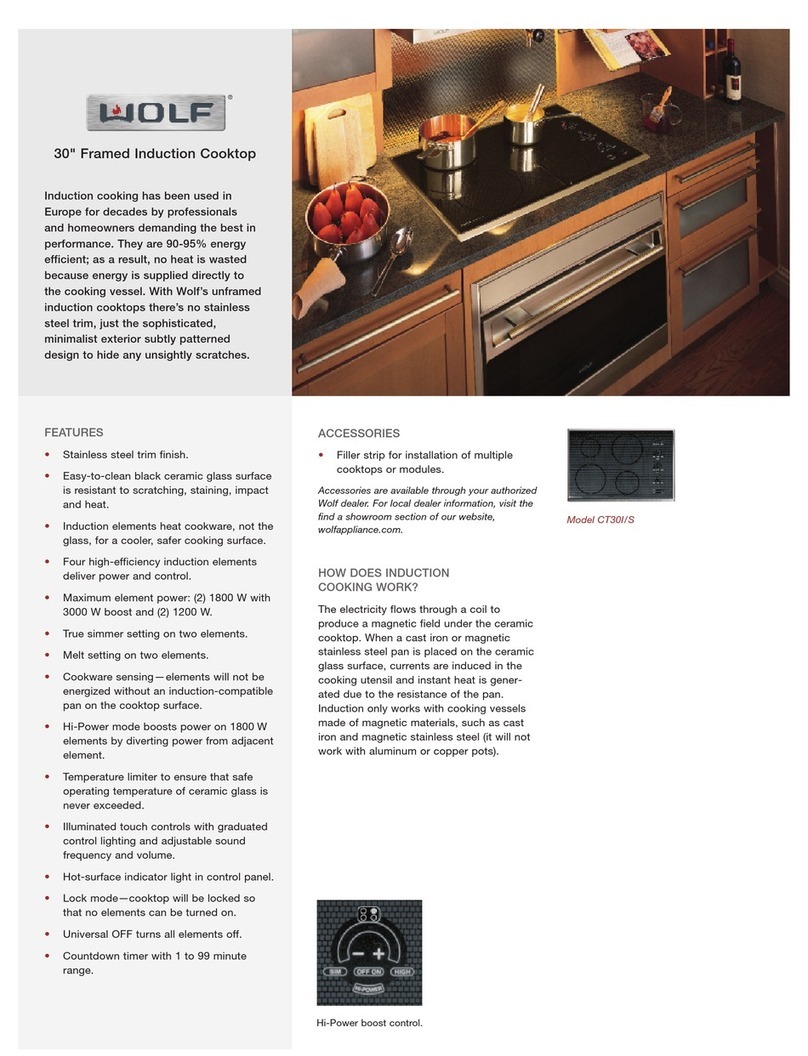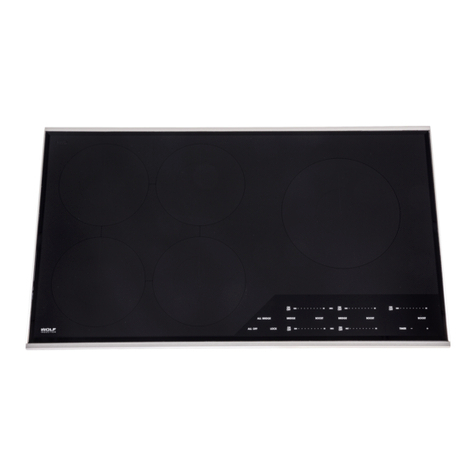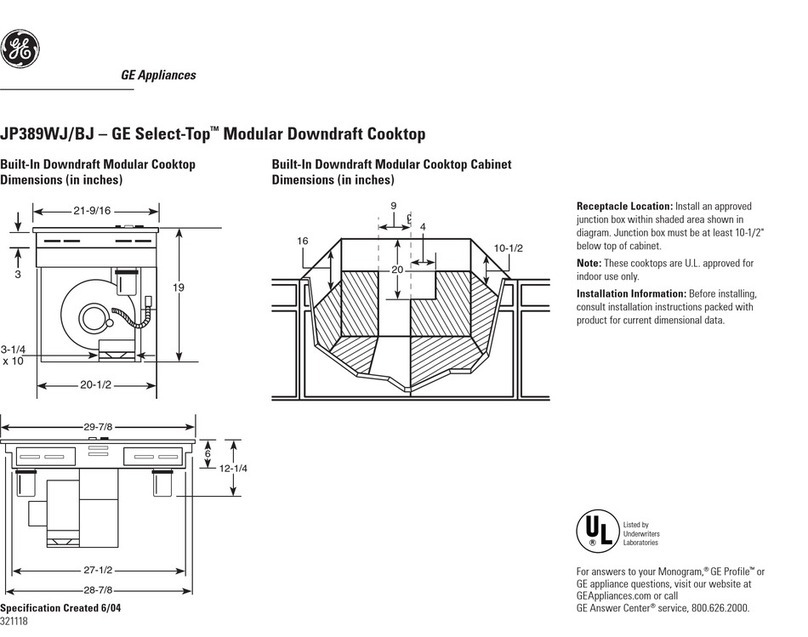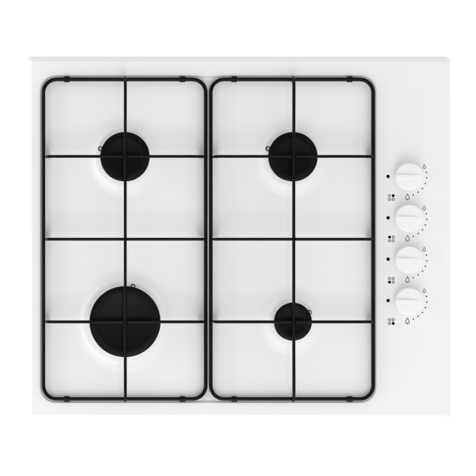General Information
1-3
GGAASSCCOOOOKKTTOOPP--
GGAASSCCOOOOKKTTOOPP--22
22SSEERRIIEESS
SSEERRIIEESS
Section 5 -Troubleshooting Guide
General Troubleshooting Guide Layout............................. 5-2
Troubleshooting Guide Table of Contents.......................... 5-2
General Troubleshooting Guide
Constant Sparking.......................................................... 5-3
Intermittent Sparking...................................................... 5-3
Poor Ignition................................................................... 5-3
No Ignition...................................................................... 5-4
Popping Noise................................................................ 5-4
Flame Appearance.......................................................... 5-4
Section 6 -Technical Data
Gas Pressure Chart........................................................ 6-2
Orifice Chart (Natural Gas)..............................................6-2
Orifice Chart (LP)....................................................... 6-3
Section 7 -Wiring Diagrams
15” Gas Cooktop............................................................ 7-2
30” Gas Cooktop............................................................ 7-3
36” Gas Cooktop............................................................ 7-4
TABLE OF CONTENTS
Page # Page #
Section 1 - General Information
Introduction........................................................................ 1-2
Important Safety Information............................................. 1-2
Technical Assistance......................................................... 1-2
Table of Contents.............................................................. 1-3
Warranty Information......................................................... 1-4
Serial Tag Location............................................................ 1-4
Model Number Key.. ......................................................... 1-5
Model Configurations 15”, 30” and 36” Cooktop............... 1-6
Model Features 15”, 30” and 36” Cooktop........................ 1-7
Section 2 - Operation Information
Types of Fuel Gas............................................................. 2-2
Heating Value of Gas......................................................... 2-2
Specific Gravity of Gas...................................................... 2-2
Principles of Gas Combustion........................................... 2-3
Burner Components 15”, 30” and 36” Cooktop................. 2-4
Operation of the Wolf 15”, 30” and 36” Gas Cooktop....... 2-5
Cleaning and Maintenance................................................ 2-6
15” 30” and 36” Gas Cooktop........................................ 2-6
Section 3 - Installation Information
Electrical Requirements..................................................... 3-2
Gas Requirements............................................................. 3-3
Installation Dimensions 15” and 30” Gas Cooktop............ 3-4
Installation Dimensions 36” Gas Cooktop......................... 3-5
Installation of Multiple Units............................................... 3-5
Installation Procedures...................................................... 3-6
Filler Strip Installation Procedure....................................... 3-7
Support Kit for DownDraft Installation Procedure.............. 3-8
Section 4 - Component Access and Removal
15”, 30” and 36” Gas Cooktops
Important Warnings and Cautions..................................... 4-2
Surface Burner Components............................................. 4-3
Burner Head with Cap.................................................... 4-3
Venturi............................................................................ 4-3
Spark Electrode.............................................................. 4-4
Inner Distribution Ring.................................................... 4-4
Cooktop Pan.................................................................. 4-4
Outer Distribution Ring................................................... 4-5
Jet Holder....................................................................... 4-5
Burner Mounting Bracket............................................... 4-5
Surface Burner Orifice.................................................... 4-5
Electrical System Components......................................... 4-6
Ring Light....................................................................... 4-6
Valve Switch................................................................... 4-6
Light Harness................................................................. 4-6
Harness.......................................................................... 4-6
Spark Module................................................................. 4-7
Spark Module Support Plate.......................................... 4-7
Lead Wire....................................................................... 4-7
Power Cord with Grip..................................................... 4-7
Manifold System Components........................................... 4-8
Gas Valve....................................................................... 4-8
Gas Valve Orifice............................................................ 4-8
Gas Tubing..................................................................... 4-9
Manifold.......................................................................... 4-9
Regulator........................................................................ 4-9
